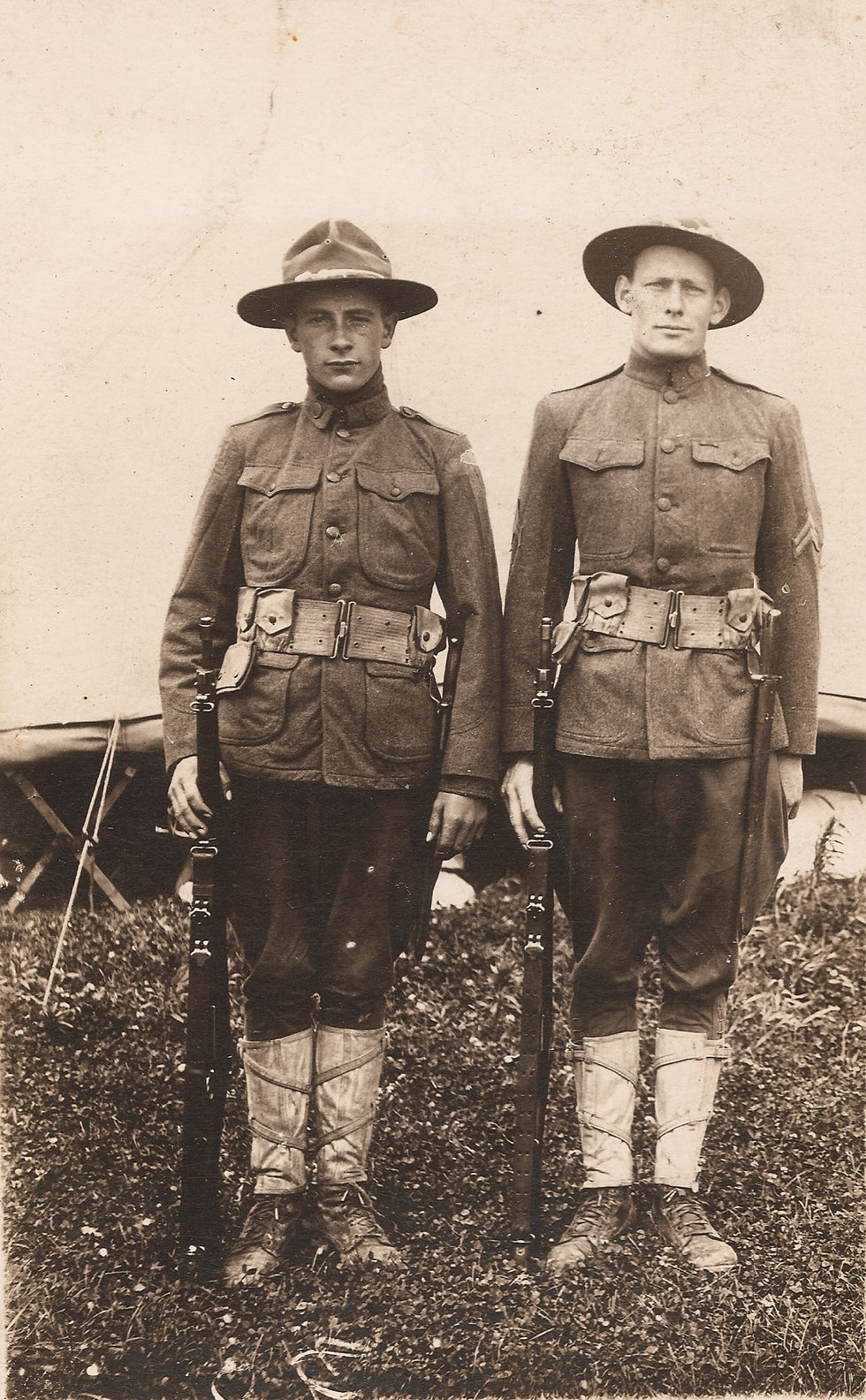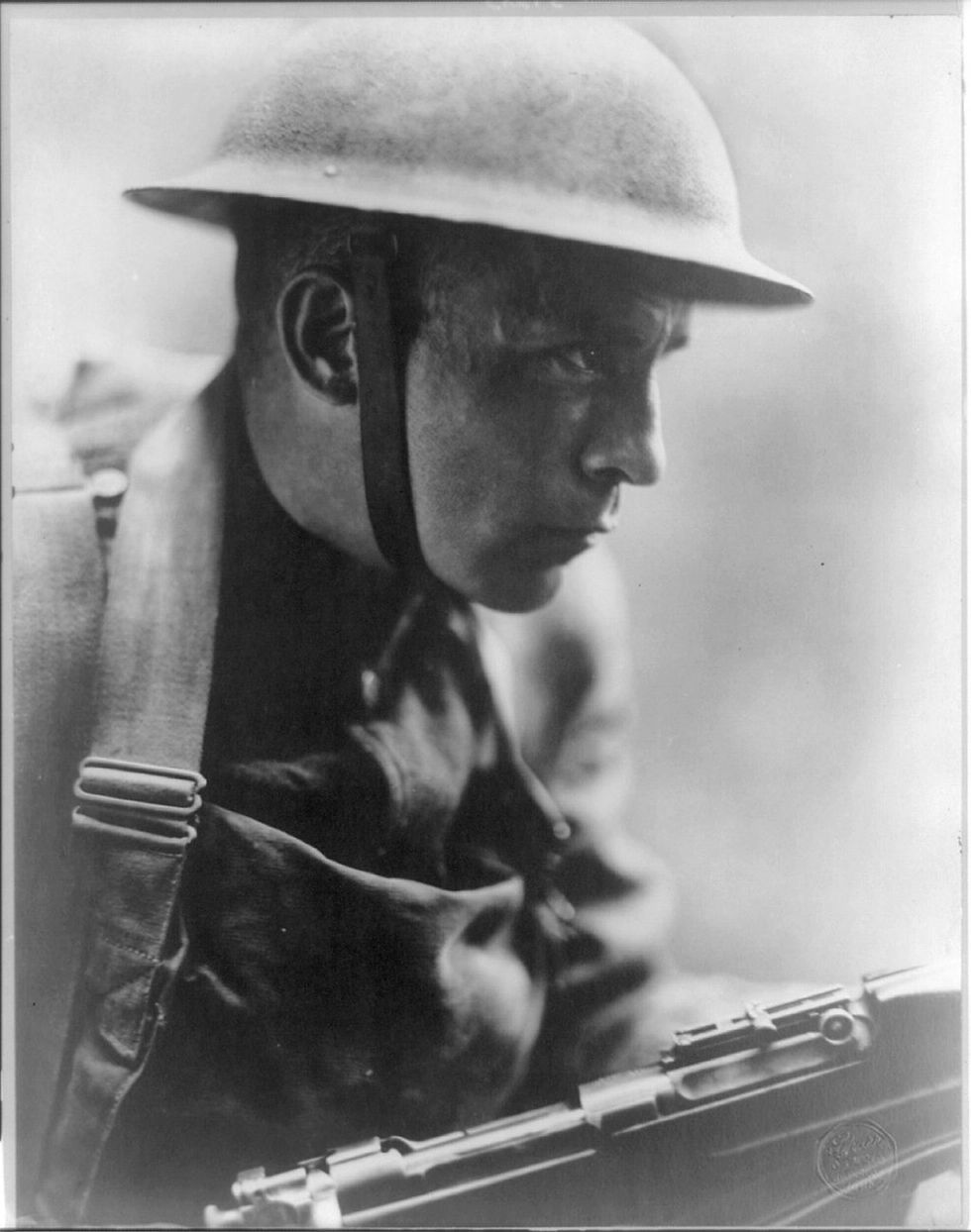'Donut' Worry, We're Honoring "Doughnut Dollies" This Memorial Day and You Can Too!
- dakeefer
- May 29, 2023
- 6 min read
Patriotism, Doughboys, Doughnuts Dollies and National Doughnut Day ... What's the Connection?
[This article is a reprint and revision of an article posted last year with updates for Memorial Day 2023, including FCHS featuring Doughnut Dollies from World War 2 in this year's Bemus Point Memorial Day parade, updated photographs and new delivery dates for Krispy Kreme donuts]
Memorial Day 2023 is here and we trust that many Americans will reflect with gratitude on the sacrifices that so many have have throughout history that has resulted in the freedoms and abundant lifestyles that we enjoy today. Fluvanna Community Historical Society will be amongst those who will be remembering, honoring, and celebrating the historical events and people who contributed to America as we know it today. One way that we plan to do this will be to re-enact a tradition that many may not be aware of. That is the tradition of National Donut Day! If you’re wondering what the connection could possibly be between donuts and American History, you are about to find out as we will "roll out” the varied and sometimes sweet history of “Doughboys”, Doughnuts, “Doughnut Dollies” and “National Doughnut Day.”
What's in a Name? History of the Term "Doughboy"
To begin with, many of us may have never heard of American soldiers being referred to as “Doughboys.” Where did this term come from? And what is the significance of this title?

The reference to American soldiers as “doughboys” occurred at various times in history and most notably throughout World War I. This name for American soldiers remained prevalent up until World War II, after which soldiers were most frequently referred to as “GIs” into the next decades. There are many versions attempting to explain why soldiers were referred to as “Doughboys” and there have been many unanswered questions “raised” as to the timing when this term came about. Navigating through the stories or these origins is no “cake” walk. There are many versions “sprinkled” throughout historical accounts.
Some versions date back to the Mexican War of 1846-48, American infantry men walked long distances over dusty terrain, giving the soldiers the appearance of being covered in flour, or dough. Another account tells that the soldiers were covered in the dust of adobe soil and were, therefore, called “adobes” which eventually evolved into the term “dough boys”. Similarly, it is told in another variation that Army troops would put clay on the piping of their uniforms or belts to give them a white appearance. Rain, however, turned the clay into “doughy blobs” which led to the reference of “dough boys”. Others note that the brass buttons on soldiers’ uniforms resembled flour dumplings or dough cakes, known as “doughboys”. This ascription to the use of the term “doughboys” dates to the Civil War era. General George Custer’s wife wrote that Civil War soldiers were known as “doughboys” because the brass buttons on their uniforms looked like doughnuts. This theme was recurrent in the 19th century accounting of sailors being handed small round doughnuts as gestures of kindness because the donuts resembled the buttons on their uniforms. Lastly, there is an account that the term originated during the Peninsular War when some of Lord Wellington’s soldiers named a location “Dough Boy Hill” because of the pains they took there to make dough for their bread while there.
"Doughboys" and the Great War

For most of us, however, the term doughboy is indelibly linked to the American soldiers of World War I. It was the troops of General John Pershing’s Expeditionary forces who sailed the Atlantic to join war weary allied armies fighting on the Western Front in Europe. The Great War was the first time in history that American soldiers were sent abroad to defend foreign soil. The French were ecstatic and proclaimed their arrival. But, what to call them would be the icing on the cake. Sprinkled in the idea mix was “yanks” which was preferred by some, or “Sammies,” (referring to Uncle Sam), and another consideration was “Pershing’s Crusaders”. But the name that seemed to finally stick was “doughboys” So, while the actual origin of the term “doughboy” is still debated. The fact remains, however, that up until World War II, American Soldiers were called by the nickname “doughboys.” This distinction was sometimes “sticky” and not always used as an honorable title either. Some contend in order to avoid sugar coating the topic, that soldiers were sometimes referenced as “ doughboys” in a form of mockery. Some people believe that the soldiers who had the position of riding on horseback used the “doughboy” designation to mock foot soldiers. As one can see, the origin and reasons for the “doughboy” appellation are numerous and it remains unclear which accounts are accurate. All in all, however, a connection can be made between doughboys and donuts when referring to the previously mentioned accounts of sailors in the 19th Century being served donuts because the buttons on their attire resembled the shape of small donuts.
Here Come the "Doughnut Dollies"
Our connections to all of this would not be complete without discussing the role of “Doughnut Lassies and Dollies,” why they are named this and what is their part in American History?

“Doughnut Lassies” and eventually “Doughnut Dollies” were volunteers from the Salvation Army. Although originally formed in Britain, they eventually started up in America. They were eager to help the war effort when America entered the Great War. In 1927, General John J. Pershing permitted some 250 Salvation Army officers to cross the Atlantic Ocean and serve U.S. soldiers at

the front lines of World War I. Famously known as “doughnut lassies” , these officers would provide comfort, food, drinks, and moral support to soldiers returning from the horrors of trench warfare. Eventually the Doughnut Dollies joined the Lassies in service to the soldiers. The “Dollies” leader, Evangeline Booth, suggested to General Pershing that he allow her to send her “soldiers” to France. The intention was to bring a bit of home to the boys far from home and so they served doughnuts to the soldiers. There are numerous articles and pictures of these women depicting them serving in active combat zones and trenches. It is interesting that the soldiers were referred to as doughboys and the volunteers who came to serve them were called doughnut lassies and dollies and one would derive that perhaps the names held some connection. But, in fact, the connection does not actually correlate. The origins of the title “doughboys” dates before World War I. It seems, that the “doughnut dollies” were named at the time of World War I and were named this simply because of the doughnuts that they were providing.

Nonetheless, the connection is clear that the “Doughnut Dollies” served the “Doughboys” and there is a National Doughnut Day to honor the “doughnut lassies” from World War I. The first celebration of National Doughnut Day was held in 1938, in the city of Chicago, to honor these volunteers from World War I. They began the holiday to raise funds and bring awareness to the Army’s social service programs during the Great Depression.
Remember and Celebrate National Doughnut Day With Us!
This Memorial Day, Monday, May 29th, 2023, at 10:00 AM, the Fluvanna Community Historical Society is pleased to announce that we will participate in the Bemus Point Memorial Day Parade, where we will likewise honor this same historical tradition in a couple of ways. Look for the "doughnut dollies" and some "sweet marching donuts" as they parade through Bemus Point in honor of those "Doughnut Dollies" who served American troops in various wars. While at the parade, you will have the opportunity to pre-order your Krispy Kreme Doughnuts or accept a flyer from a Fluvanna Historical Society Volunteer with all the information you will need to quickly place an order at your convenience so that you can have your own sweet donut treats ready to pick-up to celebrate National Doughnut Month. This year, we'll have fresh made donuts ready for you to pick-up right here in town, on Friday, June 16, 2023 at 7:00 AM. We will hold this sale, not only to honor those who served in our wars, but also to raise funds for our on-going history education programming and the restoration of our 200-year-old Historical Building. We do this so that we can continue to tell the stories, such as this one, that may otherwise be lost.
“Donut” forget to meet us at the Memorial Day parade and to order online by Wednesday, June 14, 2023 at www.FluvannaHistory.com!

[Enjoy music right from the World War 2 era and that we'll feature at this year's Memorial Day parade (just click the 'play' icon in the following SoundCloud graphic] ...





Comments